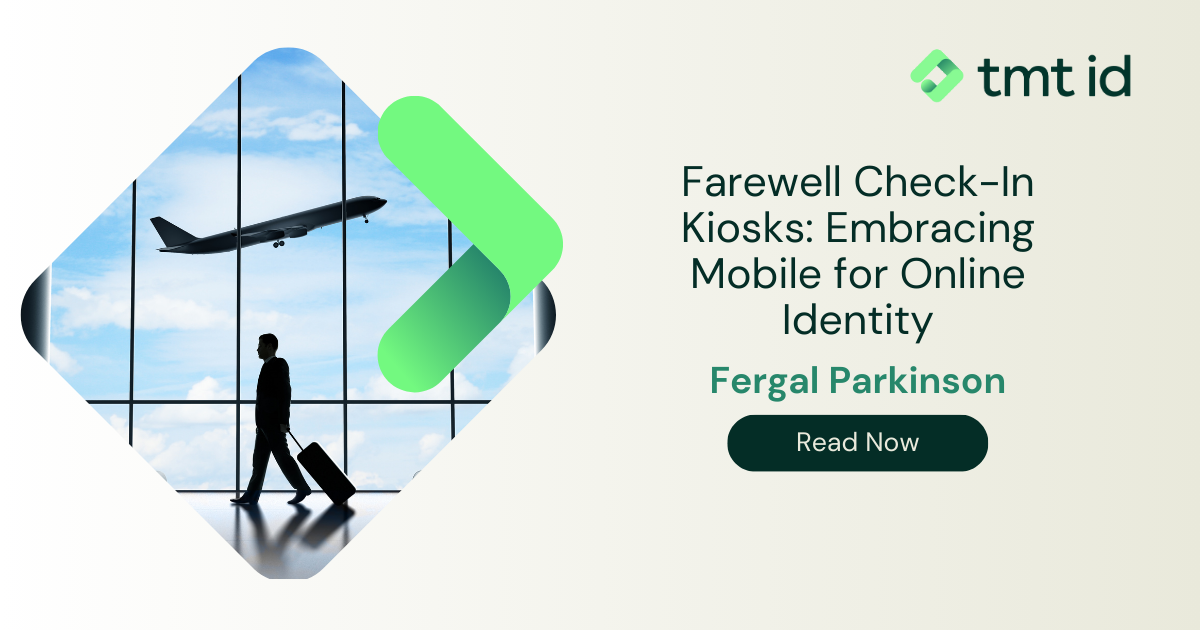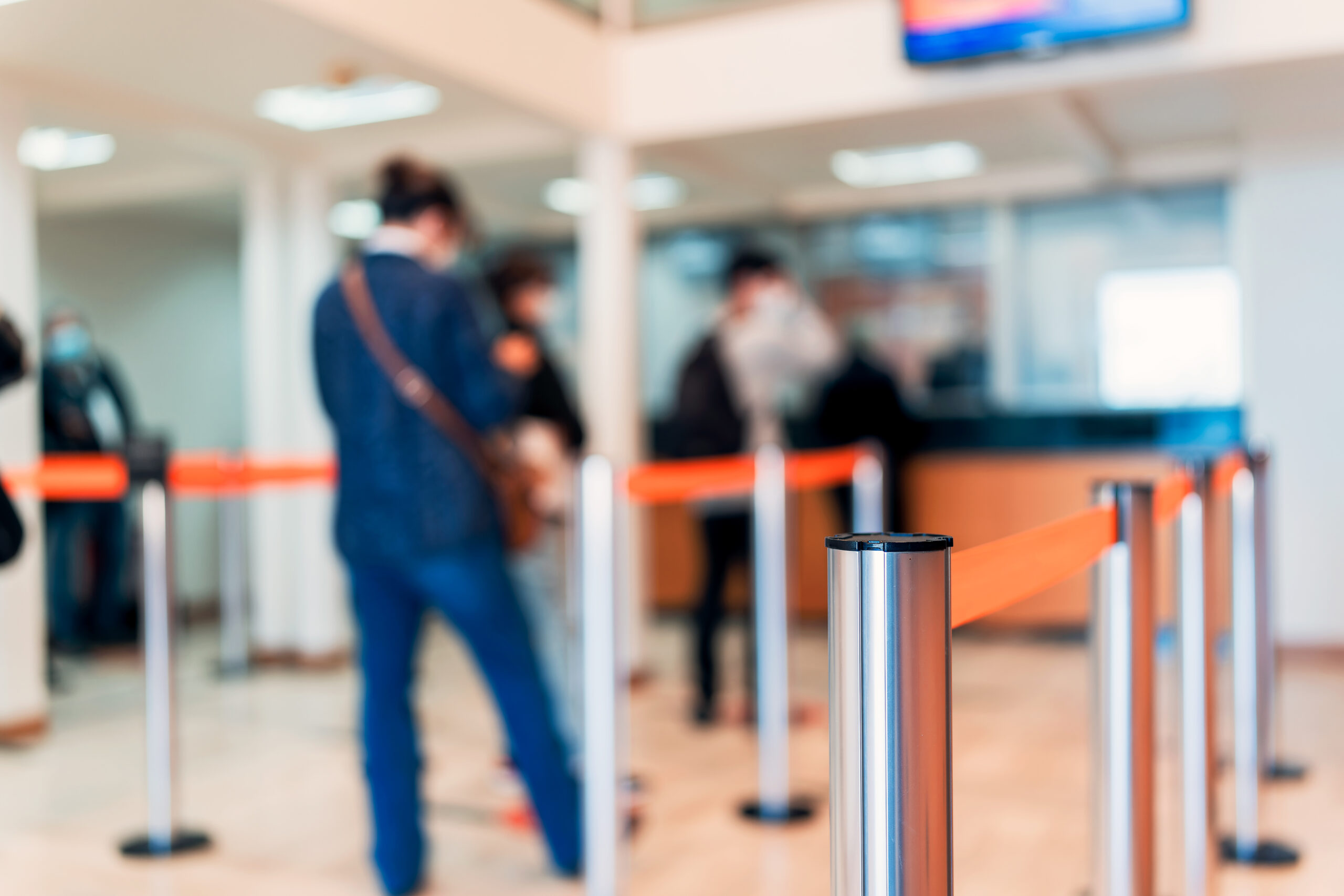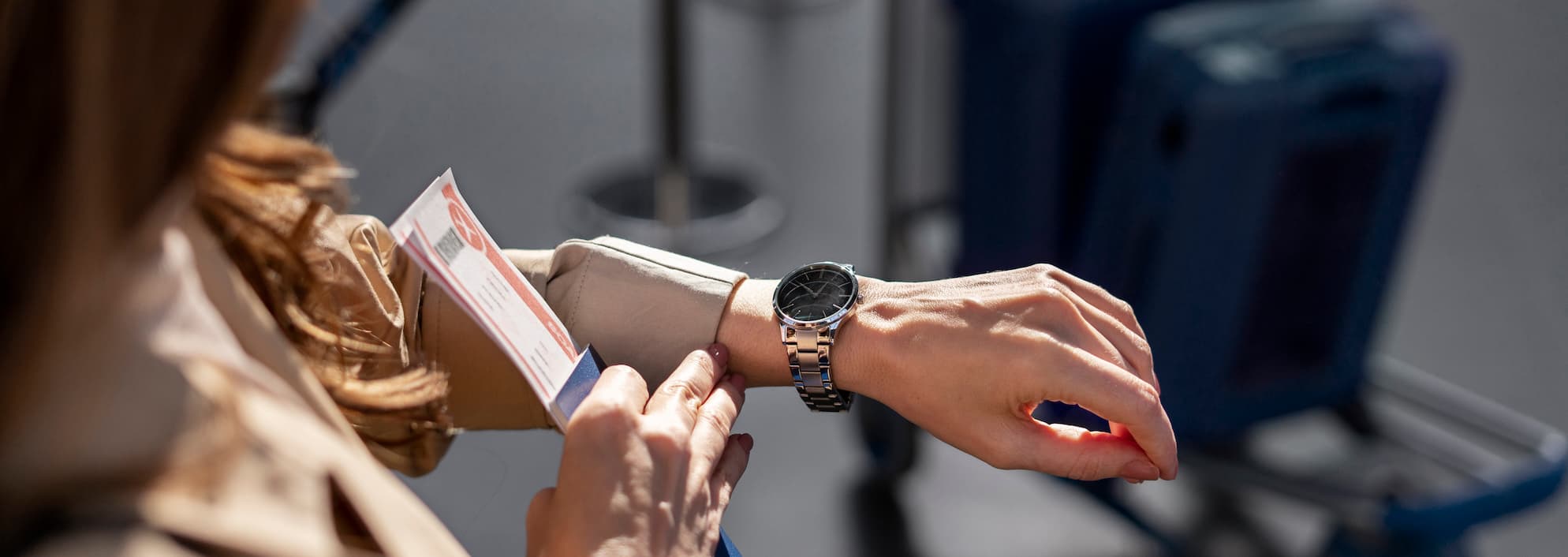
We’ve all got used to checking in online via our phones a day or two before flying to go on or go home from our holidays.
But now one airline has pledged to go even further by banishing the check-in desk altogether.
Alaska Airlines, which flies multiple routes across north and central America, has announced a three year trial, costing $2.5 billion, to transform the flight experience. As part of an upgrade of its facilities at airports like Los Angeles, San Francisco, Seattle and Portland, Alaska is removing check-in kiosks completely.
Instead, fliers will do all check-in functions by smartphone. Then they will use an airport iPad – the pilot scheme is in partnership with Apple – to print their own bag tag before dropping it off.
I can’t think too many people will miss the old system. It’s characterized in my mind by being stuck behind someone with excessive baggage, causing delays.
The airline in its announcement alluded to check-in desks as ‘pain points’ and that’s a fair description if this has ever happened to you.
In contrast, Alaska aspires to doing all the admin for each passenger’s bag drop in 45 seconds.
They also made a lot of the fact that this new system will be supported by ‘biometric’ verification – these are airports, after all, synonymous particularly in the US, with the threat from terrorists. And no US consumer is going to want to think their security in this regard is being in any way compromised.
Ordinarily when a company trials a policy change like this that involves a big shift in how things are done, there’s a watching period for their competitors to see if it’s going to work out before they decide whether they need to follow suit. But if I were a rival of Alaska Airlines, I would just crack on with developing our own version of this right now.

Customers are not going to have to ‘get used’ to a system that leans more on their familiarity with their own mobile phone – they’re there already. They are more than ready for this. So, it’s a no-brainer that it will succeed.
In fact, the real take-home is that this is one more milestone in the march to supremacy of the handheld mobile device – aka your phone. This is now at the epicenter of everyone’s digital identity and has simply superseded almost every other mechanism because increasingly it can do everything they can and in one very personal space.

As Charu Jain of Alaska put it. “Everybody uses their mobile phone now. So we’re really kind of saying ‘goodbye to kiosks and hello smartphone’.”
And because it’s central to every customer’s digital experience, its behaviours mirror theirs exactly – which, in turn, gives a crystal-clear image of their identity that’s as unique as any eye colour, birthmark or pattern of freckles. By using real-time telecom data, we can get a precise insight into the user of any mobile number and verify in a microsecond if they are who they say they are – and red flag them if they’re not.
That’s the other reason why this system won’t fail on a security level. You don’t need to ask someone: ‘did you pack this bag yourself?’ in a real face-to-face exchange – if you have the level of insight that their mobile data gives you, you know they’re on the level and they’ve already told you online.
Finally, on that thorny question of security: airports are already as secure as any state can make them, particularly under the famous Department of Homeland Security in the USA.
Passport systems and other state security protocols already lean heavily on biometric data.
By making telecom data the new emphasis of bag-check security, you are now making the whole airport experience more secure.
Our version of the most up-to-date protection systems is TMT Authenticate. It provides a seamless check – so seamless the user isn’t even aware it’s happening – with no verification codes or other hassles and no weak spots. And it’s more secure than anything that’s yet been devised.
It works by using up-to-the-minute data on users and the integrity of their mobile phone accounts from the telcos themselves so it’s a near-perfect insight.
We’re encouraging our clients to move towards offering this function. It’s proving extremely popular. And you don’t even need a Twitter account let alone a blue tick to subscribe.
Last updated on January 6, 2026
We provide the most comprehensive device, network and mobile numbering data available
Contact us > Chat to an expert >